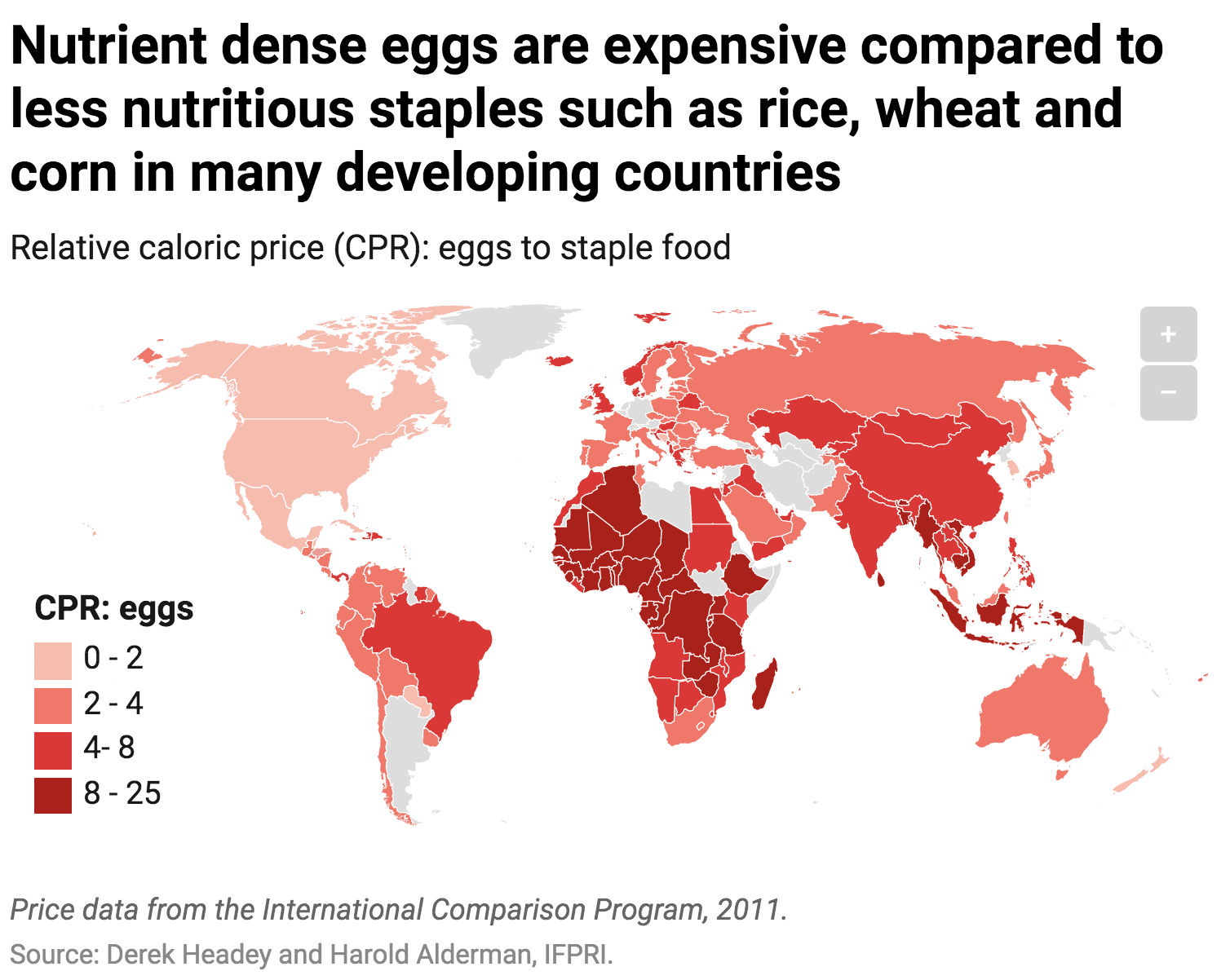A ‘caloric calculus’ with big consequences—healthy foods are expensive in poor countries, unhealthy foods cheap in rich countries—New IFPRI paper
- From
-
Published on
27.07.19
- Impact Area

Eggs and other nutrient-dense foods
are expensive in poor countries,
leading to child stunting,
while sugar and other nutrient-poor foods
are cheap in rich countries,
leading to adult obesity.
This month, senior research fellows at the International Food Policy Research Institute (IFPRI) Derek Heady and Harold Alderman published results of their study on ‘relative caloric prices’ in The Journal of Nutrition. Using International Comparison Program data for 176 countries and 657 standardized food products, Headey and Alderman compared the costs of a calorie from a given nutrient-dense food such as eggs to a calorie from a starchy staple.
The gist is that many healthy foods are much more expensive in poor countries, while many unhealthy foods are much cheaper in richer countries.
We also show that these food prices patterns do a good job in explaining international patterns in child stunting and adult obesity.
—Lead author Derek Headey, of IFPRI
Below, in excerpts from their blog article for the World Bank’s Data Blog (The high price of healthy food … and the low price of unhealthy food, 23 Jul 2019), is how authors Headey and Alderman further explain the significance of their findings.
Poor diets are now the number 1 risk factor in the global burden of disease (GBD), accounting for one in five deaths globally.
Too much sugar, fat and red meat increase the risks of heart disease, diabetes, cancer; all killers in later life (mostly in higher income countries).
Too little nutrient-dense fruits, vegetables, dairy, eggs, meat and fish are associated with wasting, stunting and micronutrient deficiencies in early childhood; all killers in early life (mostly in lower income countries).
Poor diets are therefore at the epicenter of a diverse range of health problems in a diverse range of places.
‘. . . The metric we use to analyze the global food system from a consumer perspective is the “relative caloric price” of a given food. Take eggs, for example: how expensive is an egg calorie in Niger compared to the most important staple foods in that country?
Egg calories in Niger are 23.3 times as expensive as a calorie from a staple food, such as rice or corn.
In contrast, egg calories in the US are just 1.6 times as expensive as staple food calories. . . .
Related news
-

Reinventing Kenya’s Snack Future with Dryland Grains
International Crops Research Institute for the Semi-Arid Tropics (ICRISAT)21.11.25-
Nutrition
-
Poverty reduction, livelihoods & jobs
Faces of Impact - Video Feature Story On a quiet backstreet in Mihango, Kenya, the…
Read more -
-

COP30 can enable Greening Plant Nutrition in East and Southern Africa
International Rice Research Institute (IRRI)17.11.25-
Nutrition
Image creditAfrica rice farming by majimazuri21, Pixabay Licence By Jamie Males (republished from …
Read more -
-

Positioning healthier rice varieties in Odisha for market demand and farmer income
International Rice Research Institute (IRRI)28.10.25-
Nutrition
-
Poverty reduction, livelihoods & jobs
In western Odisha, farmer groups and women’s self-help groups are taking the lead in bringing…
Read more -
